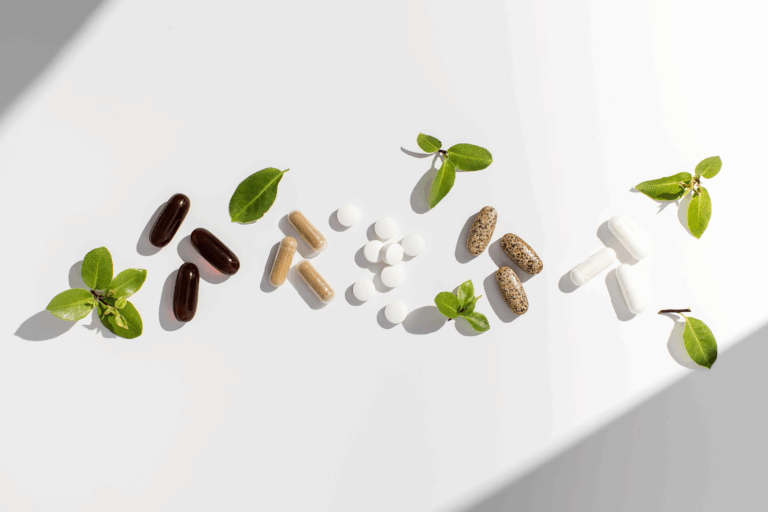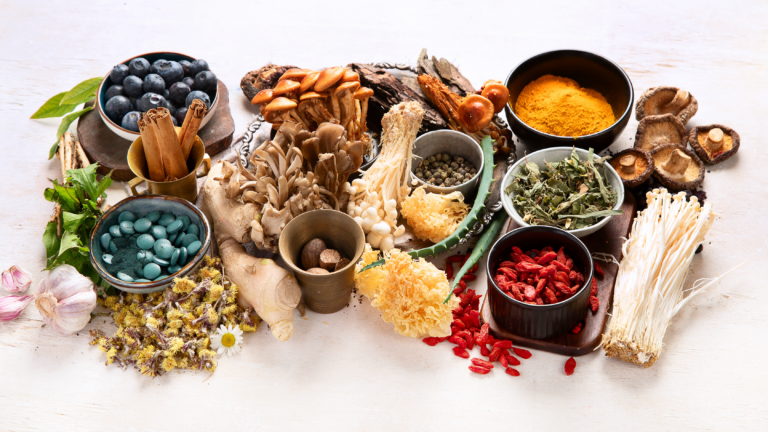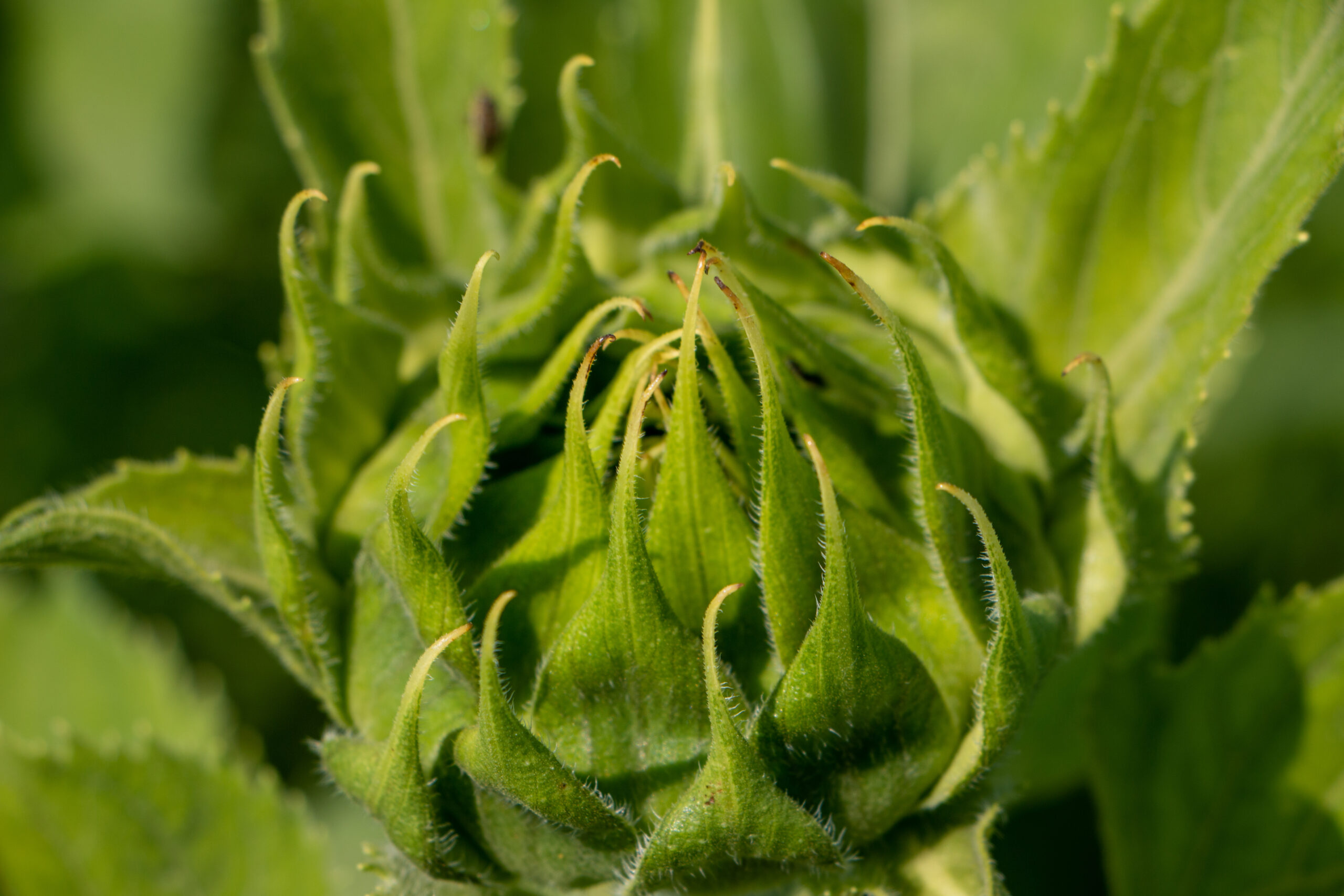Don’t Succumb to the Common Cold: Harness the Power of Herbs to Stay Healthy
Summary
The winter season is often the time of year many people become sick with colds and flu, but many lifestyle strategies and herbal remedies can help.
The winter season may be a time of comfort: a slower pace, inner focus, and reflection, but it is also the time of year that many people will battle against cold and flu season. The viruses that cause cold and flu symptoms spring to life between November and March in the Northern Hemisphere, with most American adults getting an average of between two to four colds per year.
While being exposed to cold winter weather will not necessarily mean you will “catch a cold,” transmission rates are highest in cold, dry air. Cold and flu viruses thrive when the temperatures plunge. Research suggests that these viruses are most virulent at temperatures near 40 degrees Fahrenheit or colder, and they do not transmit at all at temperatures around 85 degrees.1 This may be due to the virus’ outer lipid membrane, which is fortified by cold weather, forming a rubbery gel-like consistency that enables the virus to survive longer outside a host. Once the virus enters the respiratory tract, the outer membrane melts, and the virus is able to infect host cells and replicate. However, in warmer temperatures, that membrane is more likely to have a liquidy consistency, effectively weakening the virus so that it loses the ability to spread readily between hosts.2
Luckily, there are many ways to reduce the risk for the common cold and flu, as well as strategies to shorten the duration and lessen the severity of any cold or flu infection that does take hold. Time-honored lifestyle strategies that help keep the immune system robust and resilient include:
- Eating a healthful diet that includes a wide variety of colorful fruits, vegetables, herbs, and spices to help bolster the immune system
- Getting adequate sleep
- Exercising daily
- Managing stress
- Maintaining healthy vitamin D levels
- Washing hands often
- Supplementing with appropriate vitamins, herbs, and other medicinal plants
Aside from maintaining a healthy diet and lifestyle and following practical advice to stay healthy during the winter months, herbs, specific vitamins, and other medicinal plants offer an enormous opportunity to fortify one’s health and bounce back quickly if exposed to cold and flu viruses. While there are endless botanical possibilities, the following is a “Master List” of natural remedies to be familiar with and keep handy during the winter months:
Andrographis
Andrographis paniculata is considered among the most popular medicinal plants and is central to traditional medicine traditions throughout Asia. While andrographis has a wide array of uses, this “King of bitters” as it’s commonly known, is most often used in Ayurvedic and Traditional Chinese Medicine for cough, cold, flu, respiratory infections and other types of infections.3-4 Since these traditional models consider andrographis as having “cooling” activity, it is often used to rid the body of “excess heat,” including fevers.
Andrographis has anti-bacterial properties, and its many bioactive phytonutrients have been shown to have significant antiviral activity against influenza A virus, among other viruses.5 It has been found to help alleviate or prevent several symptoms of upper respiratory tract infections, such as headaches, earaches, cough, sore throat, fever and fatigue.6 Using andrographis may shorten the duration of cough, sore throat and sick time when compared to usual care.7 It appears to work in a dose dependent manner, with higher doses of six grams per day found to be more effective than lower doses of three grams per day.8 Andrographis has been studied in children, is considered safe and well tolerated, and may reduce the severity of common cold symptoms and speed recovery time.9
Echinacea
Echinacea is a native plant to North American and is among the most commonly used herbs in the prevention and acute treatment of colds. The immune supportive effects of both Echinacea angustifolia and Echinacea purpurea are well documented, and many clinical studies have found that echinacea extract shortens the duration and severity of both viral and bacterial colds and upper respiratory infections. Its extracts have also been found to reduce symptoms of sore throat, cough, pharyngitis, and running nose.10
Echinacea appears to influence immune function in several ways, including enhancing the maturation of dendritic cells, which play a role in initiating both the innate and adaptive immune responses.11 It may increase phagocytic activity and macrophage activation, as well as natural killer (NK) cell activity.12 While echinacea has been observed to increase monocyte secretion of tumor necrosis factor-alpha (TNF-a) and other cytokines, E. purpurea may help balance the immune system and its inflammatory response by inhibiting “cytokine storms.”13
In a randomized, double-blinded, placebo-controlled trial, echinacea was found to be effective in preventing viral colds, reducing the total number of colds in the treatment group, the number of sick days, and the use of pain medication for symptoms. The researchers found the effect to be especially useful on preventing recurrent infections, leading them to recommend that echinacea be used prophylactically over four months for maximum benefit against viral cold infections.14 Echinacea can be used prophylactically at a daily dose of 2,400 mg per day over four months, which appears to be most beneficial for preventing the common cold. Doses of 4,000 mg per day have been found to be useful for treating acute cold symptoms.15
For jetsetters, echinacea may be particularly useful. It has been found to protect against the development of upper respiratory symptoms during long flights in a randomized, double-blind, placebo controlled trial.16 Echinacea may also be useful against chronic fatigue syndrome, candida albicans, herpes, urinary and pelvic infections.17
Elderberry
Black elderberry (Sambucus nigra) extract is well known to be supportive against the common cold and symptoms of the flu. In fact, before the advent of antibiotics, herbalist, physicians and pharmacists often used elderberry in many medicinal preparations. Elderberry extract has been found to be helpful in addressing symptoms of the common cold and flu viruses, as well as in herpes virus infections. Elderberry extract has been found to be effective against bacteria that typically cause upper respiratory infections, as well as inhibits the propagation of human influenza virus.18
Fermentation Metabolites (Whole Food Fermentate)
Whole food fermentate derived from yeast is among the newest compounds being investigated for benefits against cold and flu symptoms, with promising results. This novel compound is a powder composed of heat-inactivated Saccharomyces cerevisae along with its fermentation broth. It contains a high concentration of metabolites and free radical-scavenging compounds that support healthy immune function. DF has been found to modulate the immune response, and has demonstrated clinical benefits in reducing the incidence and duration of cold and flu symptoms, while also reducing seasonal allergies related to pollen. Daily consumption of DF has been shown to improve markers of immune function, including increased salivary immunoglobulin A (IgA) levels, NK cell activation and antioxidant capacity, though exact mechanisms are not yet completely understood.19 NK cell activity and salivary IgA are important in the prevention of common colds.20
Goldenseal
Hydrastis canadensis, or goldenseal, is an herb native to North America. Historically, Native Americans used goldenseal for skin disorders, ulcers, and fevers, and its use as a medicinal plant was later adopted by European settlers. Often combined with Echinacea, goldenseal is most often used as a remedy for viral and bacterial infections, symptoms of cold and flu, respiratory tract infections, diarrhea, and hay fever.21 Goldenseal extracts, high in the alkaloid berberine, has been found to inhibit the growth of viruses such as H1N1 influenza A strains in vitro.22-23
Garlic
Garlic has long been a home remedy for many maladies, including minor viral infections. Garlic contains many compounds that may help enhance immune cell function and has been found to influence innate immune cell activity, including NK cell, which may account for its potential to reduce the severity of colds and flu. In a randomized, double-blind, placebo-controlled intervention study, supplementation with aged garlic extract was found to reduce the severity and duration of cold and flu symptoms after 90 days of use. The study also found that the number of workdays missed during that time was reduced by 58 percent. In fact, improvements in NK cell activation were seen after only 45 days of supplementation.24-25 Garlic has also been found to increase macrophage activity and the production of T and B cells, illustrating its immune modulating effect.26
Medicinal Mushrooms
Medicinal mushrooms offer important immune-modulating benefits that have been attributed to beta-glucans and polysaccharide-protein complexes. These compounds act as “biological response modifiers” that can modulate cytokines and cytokine receptors, and stimulate both the innate and adaptive immune systems.27-28 Mushroom beta-glucans may also increase immune defenses through the activation of T-cells, NK cells, macrophages, antibody production.29-30 Two important mushrooms that may help the body better deal with cold and flu season include maitake and turkey tail mushrooms:
- Maitake mushrooms (Grifola frondosa) have been found to have anti-viral activity, and support lymphocyte and NK cell activity.31
- Turkey tail mushrooms (Coriolus versicolor), contain potent antioxidants that support immune function. Two types of polysaccharide-protein complexes found in turkey tail mushrooms – krestin and polysaccharide peptide – promote healthy immune response by both activating some and inhibiting other types of immune cells, thereby balancing inflammation.32
Oregano
The popular herb oregano, Origanum vulgare, has traditionally been used as medicine for symptoms as varied as colds, and coughs, and digestive disorders. Typically used in integrative and functional medicine for its antimicrobial and antifungal properties, oregano is also known for its powerful antioxidant and antiviral activities. High in volatile oils that contribute to the aroma and flavor of oregano, this herb may offer many activities that make it a potent herb for immune support during cold and flu season.33
Thuja
Thuja occidentalis, commonly known as white cedar, is indigenous to North American and was originally used by Native Americans as a remedy for scurvy related weakness. In folk medicine, thuja has been used to treat a wide variety of maladies, from inflammation of the throat and nasal passages to psoriasis. Thuja has demonstrated antiviral action, as well as the ability to affect cytokine and antibody production, and macrophage activation. Thuja is often combined with echinacea and other immune supportive herbs for addressing acute and chronic upper respiratory tract infections. It can also be combined with antibiotics for more severe infections including bronchitis, pharyngitis and sinusitis. In a double-blind, placebo-controlled multicenter study in Germany, thuja or placebo was given to participants suffering from acute cold symptoms. The study found that thuja was effective in decreasing the duration of common colds and alleviating cold symptoms. The study’s authors recommended that thuja be taken at the first sign of a cold to be most effective.34
Thyme
Thymus vulgaris, commonly known as thyme, is a culinary and medicinal plant native to Mediterranean regions. It is known for its antimicrobial, antioxidant, and anti-inflammatory actions, and has a long history of use in respiratory conditions as an antispasmodic, expectorant, mucolytic, and antitussive.35-36 Thyme essential oils have strong antibacterial effects, which are attributed to high levels of the phenol thymol, and significant anti-inflammatory properties.37-38 Thyme extract has been shown to modulate the immune system by reducing certain nuclear factor kappa B (NF-κB) transcription factors and decrease pro-inflammatory cytokines. It has also been found to reduce mucin secretion in normal human bronchial and tracheal epithelial tissue. As a result, thyme extract may be an effective treatment against chronic pulmonary inflammatory processes that involve the hypersecretion of mucus.39
Vitamin C
Vitamin C is a nutrient that has been shown to effectively support the immune system in a number of ways. Its role as a free radical scavenger also helps to balance the inflammatory effects of immune system activation and protects against oxidative stress. Studies show that regular supplementation of 1,000 to 2,000 mg per day may reduce the duration and severity of colds in adults and children. Athletes may receive an added benefit from vitamin C supplementation when it comes to preventing colds. Study subjects who participated in rigorous exercise, such as marathon running and skiing, cut their risk for the common cold in half with 600 to 1000 mg of vitamin C per day. Some studies suggest that combining vitamin C with zinc may offer additional benefit.40
Vitamin D
In the last decade, vitamin D has been established as a critical nutrient related to immune health. Taking vitamin D supplements and maintaining adequate levels may reduce the risk for contracting seasonal colds, flu and upper respiratory infections. While dosing for prevention appears to range between 400 IU to 2,000 IU daily, some epidemiological studies have suggested 4,000 IU per day of vitamin D significantly increases the likelihood of staying infection-free. Vitamin D3 supplementation during the winter months has been found to reduce the risk of influenza A and may enhance innate immunity, especially in children, at daily doses of 1,200 IU. In a different study, weekly bolus doses of 10,000 IU of vitamin D3 was found to prevent upper respiratory tract infections in young adults.41
Zinc
Adequate zinc supports the physical barriers that make up the body’s first line of defense against viruses that cause colds and flu, including mucus secretions and mucosal membrane integrity. Unbound zinc ions interfere with rhinovirus replication, offering another line of defense. Zinc supplementation increases aspects of the innate immune system, increasing the cellular activity of macrophages, neutrophils, and NK cells. It is also required for proper antigen presentation, which is necessary to trigger the adaptive immune system’s antibody response. Zinc also has a direct effect on lymphocyte maturation and differentiation. While zinc is involved in activating certain parts of the immune system, it also protects against the oxidative stress caused by the immune system’s inflammatory cascade. Zinc supplementation has been found to reduce the risk for pneumonia, common cold and respiratory tract infections, especially among children and the elderly, at doses of 20 mg per day. Zinc has also been found to shorten cold duration by about 33 percent. It is recommended to begin supplementation with zinc within 24 hours of the earliest cold symptoms to be most effective.42
There are clearly many opportunities for everyone to take control of their own health, especially during the months where cold and flu are prevalent. Find out what works best for you, and make healthy habits part of your regular routine!
Interested in learning more about whole food nutrition, sustainability in healthy diets, and the power of phytonutrients? Check out season 2 of the WholisticMatters Podcast Series, “Building A Healthy Lifestyle”, hosted by nutritionist and public health expert Meghan Hamrock, MS, MPH.
Learn more about the importance of a whole food philosophy for health.
- Kolata G. (2007). Study shows why the flu likes winter. The New York Times. https://www.nytimes.com/2007/12/05/health/research/05flu.html.
- National Institutes of Health. (n.d.) NIH scientists offer explanation for winter flu season. NIH.gov. https://www.nih.gov/news-events/news-releases/nih-scientists-offer-explanation-winter-flu-season. Accessed December 10, 2018.
- Hu, X.Y., Wu, R.H., Logue, M., et al. (2017). Andrographis paniculata (Chuān Xīn Lián) for symptomatic relief of acute respiratory tract infections in adults and children: A systematic review and meta-analysis. PLoS One, 12(8):e0181780.
- Richard, E.J., Murugan, S., Bethapudi, B., Illuri, R., Mundkinajeddu, D., Chinampudur Velusami, C. (2017). Is Andrographis paniculata extract and andrographolide anaphylactic?. Toxicol Rep, 4:431-437.
- Hossain, M.S., Urbi, Z., Sule, A., Hafizur Rahman, K.M. (2014). Andrographis paniculata (Burm. f.) Wall. ex Nees: a review of ethnobotany, phytochemistry, and pharmacology. ScientificWorldJournal :274905.
- Coon, J.T., Ernst, E. (2004). Andrographis paniculata in the treatment of upper respiratory tract infections: a systematic review of safety and efficacy. Planta Med, 70(4):293-8.
- Hu, X.Y., Wu, R.H., Logue, M., et al. (2017). Andrographis paniculata (Chuān Xīn Lián) for symptomatic relief of acute respiratory tract infections in adults and children: A systematic review and meta-analysis. PLoS One,12(8):e0181780.
- Thamlikitkul, V., Dechatiwongse, T., Theerapong, S., et al. (1991). Efficacy of Andrographis paniculata, Nees for pharyngotonsillitis in adults. J Med Assoc Thai, 74(10):437-42.
- Spasov, A.A., Ostrovskij, O.V., Chernikov, M.V., Wikman, G. (2004). Comparative controlled study of Andrographis paniculata fixed combination, Kan Jang and an Echinacea preparation as adjuvant, in the treatment of uncomplicated respiratory disease in children. Phytother Res, 18(1):47-53
- Block, K.I., Mead, M.N. (2003). Immune system effects of echinacea, ginseng, and astragalus: a review. Integr Cancer Ther, 2(3):247-67.
- Rondanelli, M., Miccono, A., Lamburghini, S., et al. (2018). Self-care for common colds: The pivotal role of vitamin D, vitamin C, zinc, and Echinacea in three main immune interactive clusters (physical barriers, innate and adaptive immunity) involved during an episode of common colds-practical advice on dosages and on the time to take these nutrients/notanicals in order to prevent or treat common colds. Evid Based Complement Alternat Med, 2018:5813095.
- Block, K.I., Mead, M.N. (2003). Immune system effects of echinacea, ginseng, and astragalus: a review. Integr Cancer Ther, 2(3):247-67.
- Rondanelli, M., Miccono, A., Lamburghini, S., et al. (2018). Self-care for common colds: The pivotal role of vitamin D, vitamin C, zinc, and Echinacea in three main immune interactive clusters (physical barriers, innate and adaptive immunity) involved during an episode of common colds-practical advice on dosages and on the time to take these nutrients/notanicals in order to prevent or treat common colds. Evid Based Complement Alternat Med, 2018:5813095.
- Jawad, R., Schoop, A., Suter, P., Klein, & Eccles, R. (2012). Safety and efficacy problem of Echinacea purpurea to prevent common cold episodes: A randomized, double-blind, placebo-controlled trial. Evidence-Based Complementary and Alternative Medicine.
- Rondanelli, M., Miccono, A., Lamburghini, S., et al. (2018). Self-care for common colds: The pivotal role of vitamin D, vitamin C, zinc, and Echinacea in three main immune interactive clusters (physical barriers, innate and adaptive immunity) involved during an episode of common colds-practical advice on dosages and on the time to take these nutrients/notanicals in order to prevent or treat common colds. Evid Based Complement Alternat Med, 2018:5813095.
- Tiralongo, E., Lea, R.A., Wee, S.S., Hanna, M.M., Griffiths, L.R. (2012). Randomized, double blind, placebo-controlled trial of echinacea supplementation in air travelers. Based Complement. Alternat. Med, 2012:182
- Block, K.I., Mead, M.N. (2003). Immune system effects of echinacea, ginseng, and astragalus: a review. Integr Cancer Ther, 2(3):247-67.
- Krawitz, C., Mraheil, M.A., Stein, M., et al. (2011). Inhibitory activity of a standardized elderberry liquid extract against clinically-relevant human respiratory bacterial pathogens and influenza A and B viruses. BMC Complement Altern Med;11:16.
- Evans, M., Reeves, S., Robinson, L.E. (2012). A dried yeast fermentate prevents and reduces inflammation in two separate experimental immune models. Evid Based Complement Alternat Med, 2012:973041.
- Rondanelli, M., Miccono, A., Lamburghini, S., et al. (2018). Self-care for common colds: The pivotal role of vitamin D, vitamin C, zinc, and Echinacea in three main immune interactive clusters (physical barriers, innate and adaptive immunity) involved during an episode of common colds-practical advice on dosages and on the time to take these nutrients/notanicals in order to prevent or treat common colds. Evid Based Complement Alternat Med, 2018:5813095.
- National Center for Complementary and Integrative Health. Goldenseal. https://nccih.nih.gov/health/goldenseal Accessed: January 10, 2019.
- Cecil, C.E., Davis, J.M., Cech, N.B., Laster, S.M. (2011). Inhibition of H1N1 influenza A virus growth and induction of inflammatory mediators by the isoquinoline alkaloid berberine and extracts of goldenseal (Hydrastis canadensis). Int Immunopharmacol, 11(11):1706-14.
- Junio, H.A., Sy-Cordero, A.A., Ettefagh, K.A., et al. (2011). Synergy-directed fractionation of botanical medicines: a case study with goldenseal (Hydrastis canadensis). J Nat Prod, 74(7):1621-9.
- Nantz, M.P., Rowe, C.A., Muller, C.E., et al. (2012). Supplementation with aged garlic extract improves both NK and γδ-T cell function and reduces the severity of cold and flu symptoms: a randomized, double-blind, placebo-controlled nutrition intervention. Clin Nutr, 31(3):337-44.
- Percival, S.S. (2016). Aged garlic extract modifies human immunity. J Nutr, 146(2):433S-436S.
- Ried, K. (2016). Garlic lowers blood pressure in hypertensive individuals, regulates serum cholesterol, and stimulates immunity: An updated meta-analysis and review. J Nutr;146(2):389S-396S.
- Ooi, V.E., Liu, F. (2000). Immunomodulation and anti-cancer activity of polysaccharide-protein complexes. Curr Med Chem, 7(7):715-29.
- Feeney, M.J., Miller, A.M., Roupas, P. (2014). Mushrooms—biologically distinct and nutritionally unique: Exploring a “third food kingdom.” Nutrition Today, 49(6):301-307.
- Akramiene, D., Kondrotas A., Didziapetriene, J., Kevelaitis, E. (2007). Effects of beta-glucans on the immune system. Medicina (Kaunas), 43(8):597-606.
- Zhang, J.J., Li, Y., Zhou, T., Xu, D.P., Zhang, P., Li, S., Li, H.B. (2016). Bioactivities and health benefits of mushrooms mainly from China. Molecules; 21:938
- He, Y., Li, X., Hao, C., et al. (2018). Grifola frondosa polysaccharide: a review of antitumor and other biological activity studies in China. Discov Med, 25(138):159-176.
- Sekhon, B.K., Sze, D.M., Chan, W.K., et. al. (2013). PSP activates monocytes in resting human peripheral blood mononuclear cells: immunomodulatory implications for cancer treatment. Food Chem;138(4):2201-9.
- Zhang, X.L., Guo, Y.S., Wang, C.H. (2014). Phenolic compounds from Origanum vulgare and their antioxidant and antiviral activities. Food Chem, 152:300-6.
- Naser, B., Bodinet, C., Tegtmeier, M., Lindequist, U. (2005). Thuja occidentalis (Arbor vitae): A Review of its pharmaceutical, pharmacological and clinical properties. Evid Based Complement Alternat Med, 2(1):69-78.
- Salehi, B., Mishra, A.P., Shukla, I., et. al. (2018). Thymol, thyme, and other plant sources: Health and potential uses. Phytother Res, 32(9):1688-1706.
- Oliviero, M., Romilde, I., Beatrice, M.M., et. al. (2016). Evaluations of thyme extract effects in human normal bronchial and tracheal epithelial cell lines and in human lung cancer cell line. Chem Biol Interact; 256:125-33.
- Sakkas, H., Papadopoulou, C. (2017). Antimicrobial activity of basil, oregano, and thyme essential oils. J Microbiol Biotechnol. 27(3):429-438. doi: 10.4014/jmb.1608.08024.
- Oliviero, M., Romilde, I., Beatrice, M.M., et. al. (2016). Evaluations of thyme extract effects in human normal bronchial and tracheal epithelial cell lines and in human lung cancer cell line. Chem Biol Interact, 256:125-33.
- Oliviero, M., Romilde, I., Beatrice, M.M., et. al. (2016). Evaluations of thyme extract effects in human normal bronchial and tracheal epithelial cell lines and in human lung cancer cell line. Chem Biol Interact, 256:125-33.
- Rondanelli, M., Miccono, A., Lamburghini, S., et al. (2018). Self-care for common colds: The pivotal role of vitamin D, vitamin C, zinc, and Echinacea in three main immune interactive clusters (physical barriers, innate and adaptive immunity) involved during an episode of common colds-practical advice on dosages and on the time to take these nutrients/notanicals in order to prevent or treat common colds. Evid Based Complement Alternat Med, 2018:5813095.
- Rondanelli, M., Miccono, A., Lamburghini, S., et al. (2018). Self-care for common colds: The pivotal role of vitamin D, vitamin C, zinc, and Echinacea in three main immune interactive clusters (physical barriers, innate and adaptive immunity) involved during an episode of common colds-practical advice on dosages and on the time to take these nutrients/notanicals in order to prevent or treat common colds. Evid Based Complement Alternat Med, 2018:5813095.
- Rondanelli, M., Miccono, A., Lamburghini, S., et al. (2018). Self-care for common colds: The pivotal role of vitamin D, vitamin C, zinc, and Echinacea in three main immune interactive clusters (physical barriers, innate and adaptive immunity) involved during an episode of common colds-practical advice on dosages and on the time to take these nutrients/notanicals in order to prevent or treat common colds. Evid Based Complement Alternat Med, 2018:5813095.







